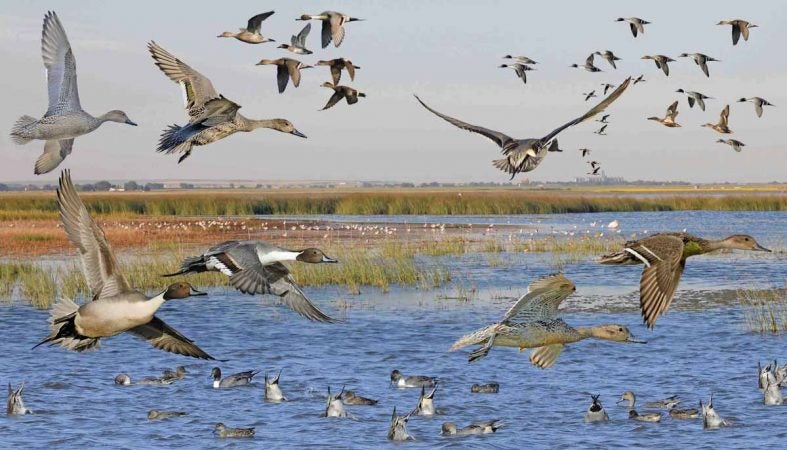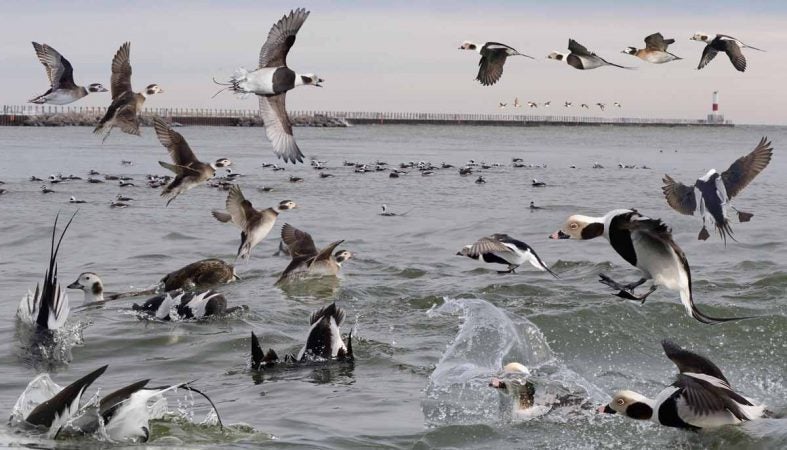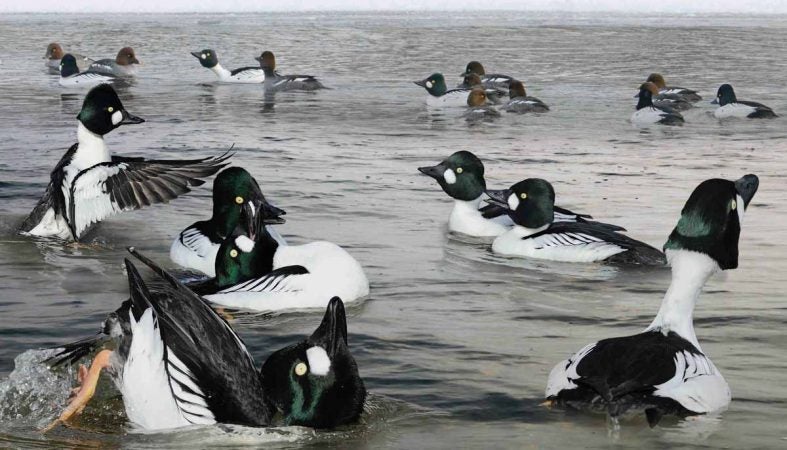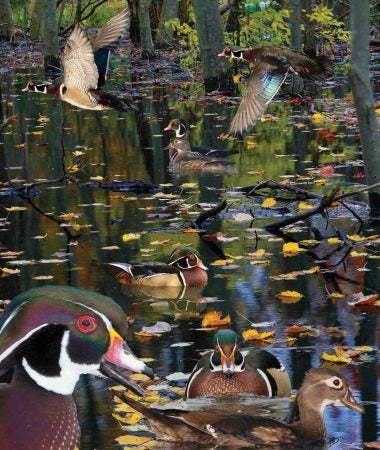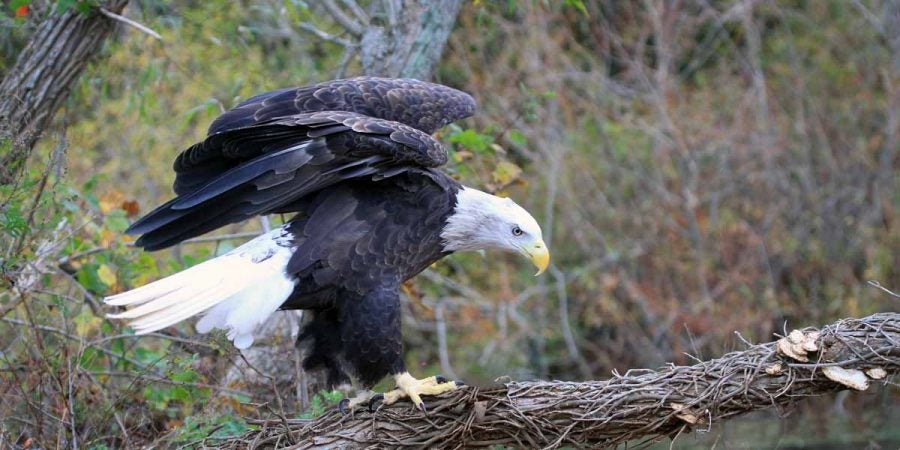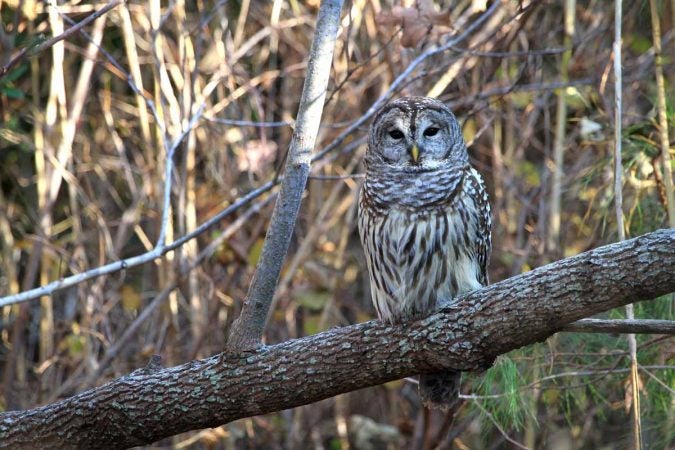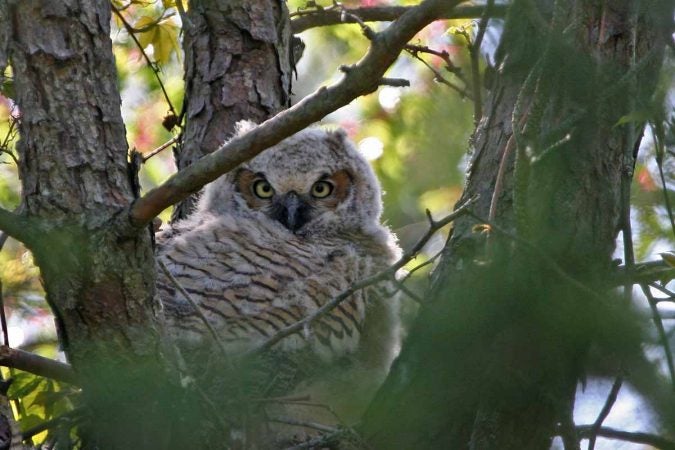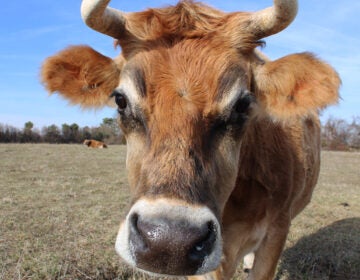Why New Jersey is a favorite for bird photographers
New Jersey offers a variety of sites to observe and photograph hundreds of bird species.
-
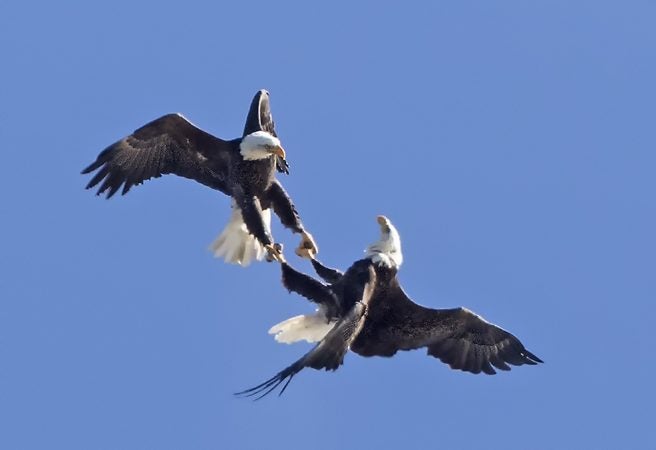
Bald eagles jousting at Cape May, N.J. (Photo by Kevin Karlson)
-
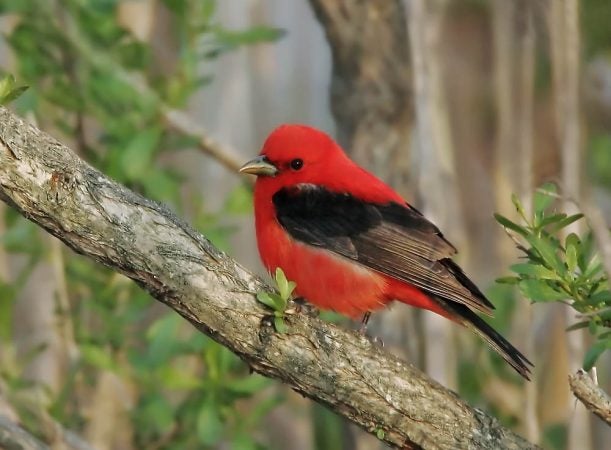
Scarlet tanager at Stone Harbor N.J. (Photo by Kevin Karlson)
-
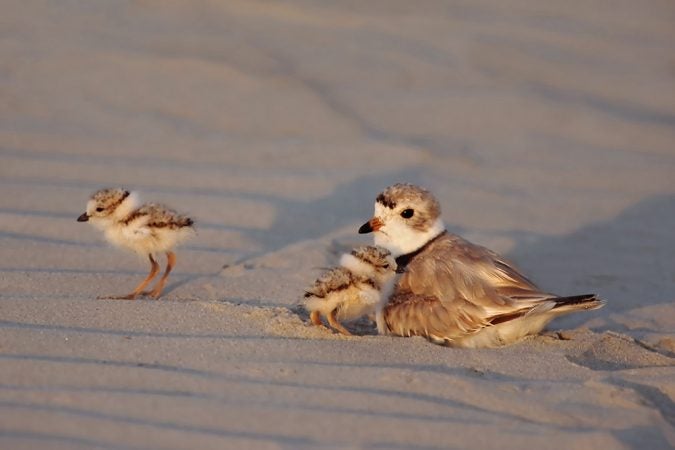
Piping plover with chicks in Cape May, N.J. (Courtesy of Kevin Karlson)
-
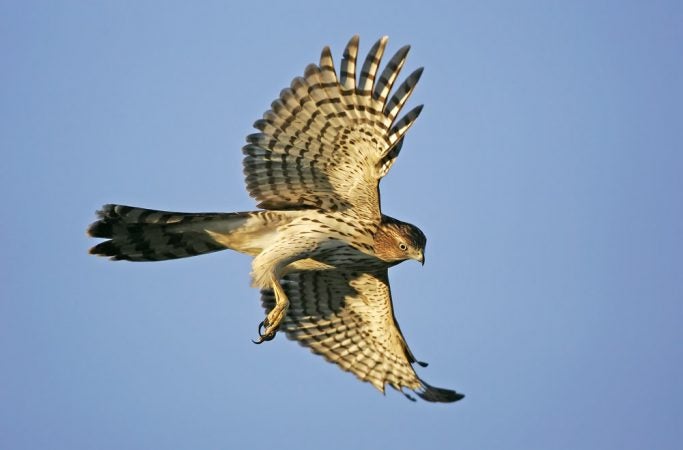
Cooper's hawk in Cape May, N.J. (Photo by Kevin Karlson)
-
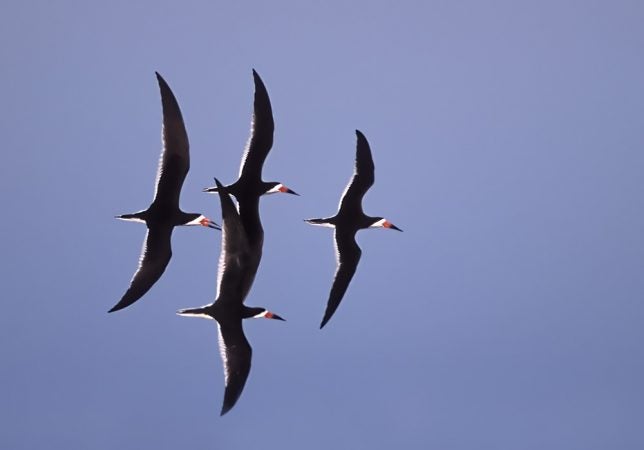
Black skimmers in synchronous flight at Stone Harbor, N.J. (Photo by Kevin Karlson)
-
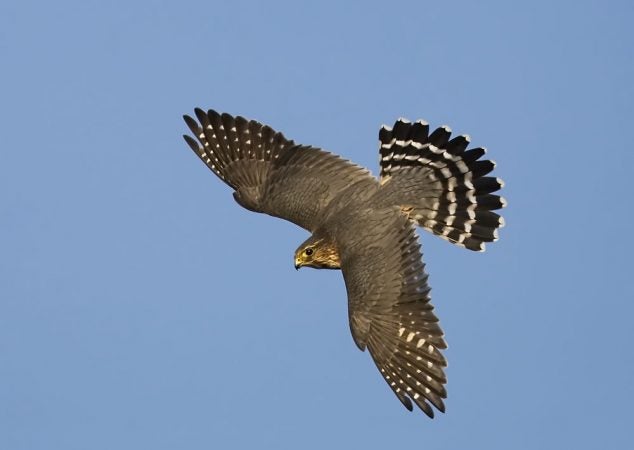
Adult male merlin at Cape May Point, N.J. (Photo by Kevin Karlson)
-
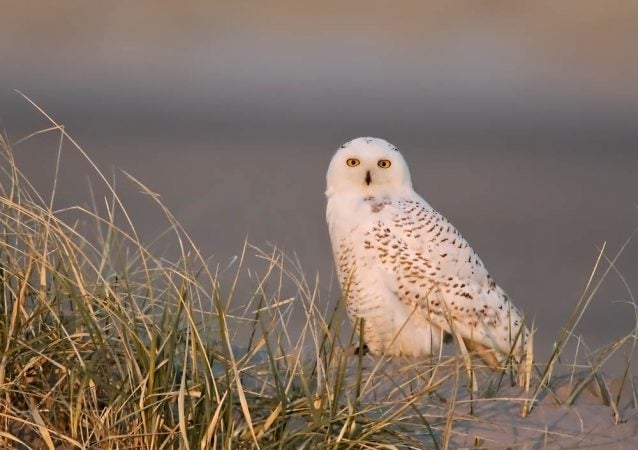
Snowy owl at Stone Harbor, N.J. (Photo by Kevin Karlson)
-
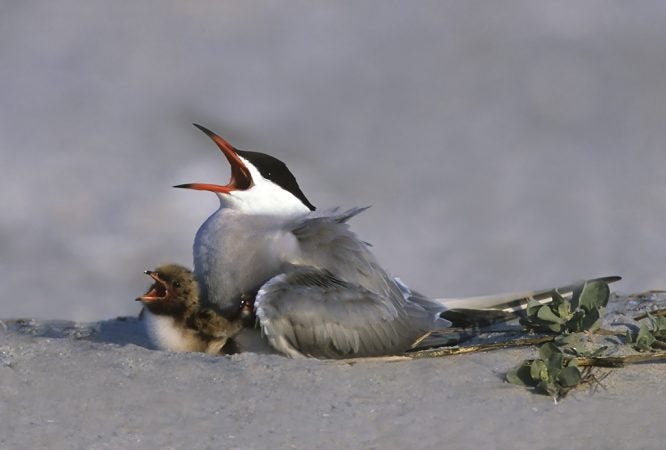
Common tern with chick at Stone Harbor, N,J. (Photo by Kevin Karlson)
-
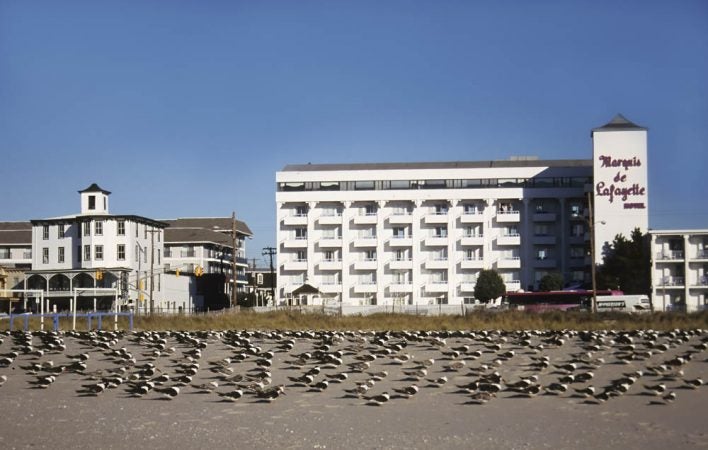
Black skimmers on Cape May beach, N.J. (Photo by Kevin Karlson)
-

Red knots, ruddy turnstones at Reeds Beach N.J. (Photo by Kevin Karlson)
-
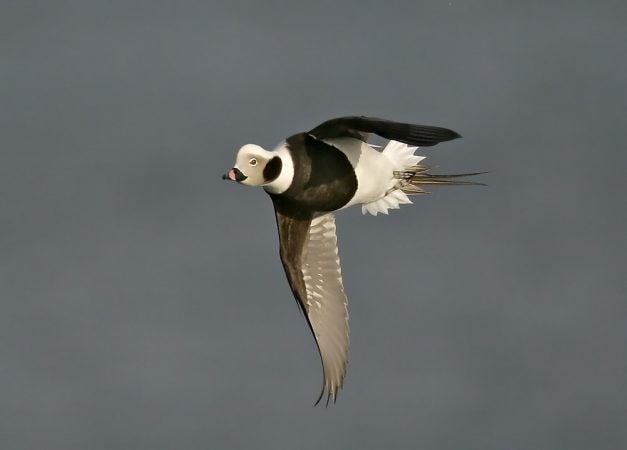
Long-tailed duck (Photo by Kevin Karlson)
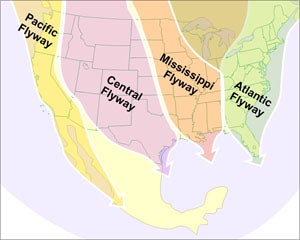
The experts agree, the Jersey Cape stands out as one of the best birding spots in the region, perhaps one of the best spots in the world. Throughout the year, hundreds of species of birds pass the Shore as they migrate; others nest and breed along the beaches, marshes and protected lands along the cape. New Jersey is part of the North/South route called the Atlantic Flyway.
We spoke to three experts for tips on capturing the best images of these birds. They agreed the Cape May area is a wonderful spot for bird photography, but not about that much else — aside from the admonition not to take expert advice too seriously.
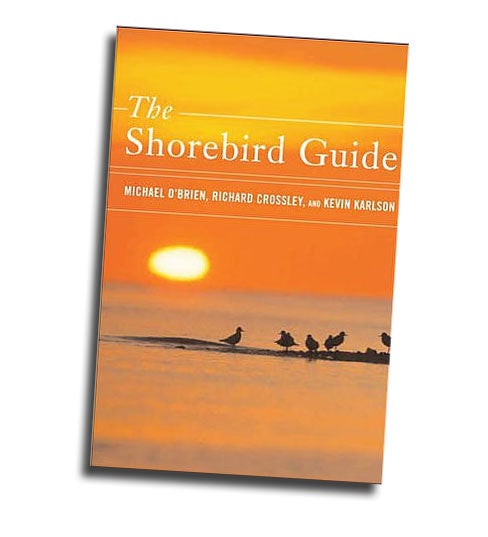
“I’d encourage any beginning photographer to go to some instructors, and then disregard everything they said,” said Kevin Karlson. “Everything except the classic elements of composition and balance.
Karlson is a professional ornithologist, author and photographer whose work has appeared in numerous magazines, websites and calendars. Karlson recently finished the manuscript for a book on gull identification, a surprisingly difficult type of birding. He’s written several other books on birding, including “The Shore Bird Guide,” one of the seminal works on the topic, with co-authors Michael O’Brien and Richard Crossley.
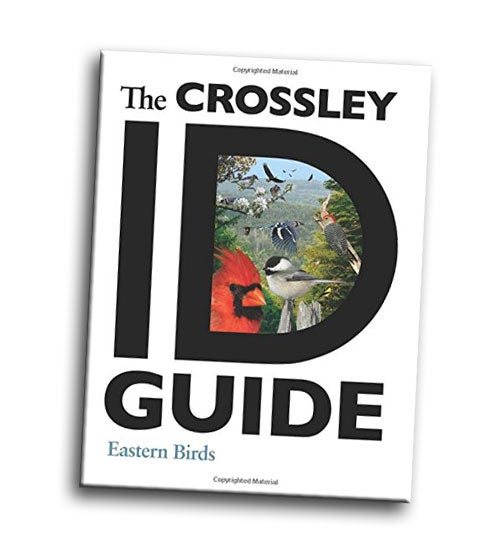
The photos of author, photographer and bird expert Crossley for his guidebook series break many of the rules of bird photography. For instance, he combines many images to show birds from multiple angles in their typical habitat.
“The innovative design shows a more lifelike and complete picture, challenging many of the traditional ‘old-school’ book layouts,” according to his website. “This allows kids and beginners a better understanding of the looks and lives of birds.”
Originally from Yorkshire in northern England, Crossley has been fascinated by birds since childhood. Now an expert ornithologist, he said he moved to the Cape May area because of the birds, particularly the dramatic migrations each year.
“The birding’s fantastic over here,” he said. He mentioned the warbler migration, the sea-going scooters and the long-distance travelers called passerines — in addition to hawks and monarch butterflies, which sometimes gather in the thousands on the cape in early fall. “I live in Cape May for the spectacles, not the individual birds.”
Related story: Why Cape May is such a good place to see hawks
A classic image — one that aspiring wildlife photographers often strive for — is a colorful or majestic bird in sharp focus against a blur of background. Crossley said that’s of almost no interest to him.
“To me, the best photos involve action. They tell a story. So a bird side-on, up close with an out-of-focus background, as far as I see, it’s a delete. Unfortunately, that has been the image that has sold in North America,” he said. “It’s not lifelike. There’s no character. There’s no engagement with nature or the outdoors.”
Crossley wants to see images that show a species in its habitat, engaged in its natural behavior. While his interest in birds has been lifelong, the photography came later.
“I was involved in a book, and we couldn’t get the photos. I had to buy a big fancy 500-millimeter lens and become a photographer,” he said.
Camera equipment
Just how much gear do you need to capture truly amazing photos of birds? And how much should you plan to spend to get started? Like so much else, that depends on what you plan to do — and whom you ask.
“Unfortunately, money counts. Money really counts,” said Crossley. A high-quality single-lens reflex camera and a telephoto lens will set you back at least $1,000, and the price climbs quickly from there.
“You really need to use a decent camera,” said Lee Hajduk, an avid photographer and volunteer with the Cape May Bird Observatory whose work has been shown at the Cape May Artists Cooperative. She has traveled the world with her husband, Chris, in search of birds ready for their closeups, including a recent trip to the Antarctic to photograph penguins.
It’s possible to get a good image on a cell phone camera, if you’re lucky enough to get close and there’s a lot of light. But to consistently capture first-rate images, you need a high-quality camera, she and others say.
Each choice, however, comes with trade-offs. Hawks and other birds of prey rarely get close to people, so a long lens with a great deal of magnification will get you a lot closer to the action. In addition to the magnification, a wider aperture lens lets in more light, but it also weighs more and tends to be much more expensive.
But those big lenses won’t help you capture the nuthatch that flits by you while you’re on the trail, then lands on a branch about 2 feet away. Hajduk travels with two cameras, one with a telephoto lens, the other with a wide-angle lens, to be ready.
“The birds are quick. They don’t stand still very long,” she said.
Most photographers say you should stick with Canon or Nikon cameras. Karlson said you’ll need that big, expensive lens to get certain shots — and, years ago, you needed that $5,000 body. But now, he said, point-and-shoot cameras from Minolta, Panasonic or Sony keep getting better and better. He suggested starting off with a high-end point-and-shoot camera, maybe spending $700. Even if you don’t capture the eagle diving after a fish, you’ll likely get some wonderful images if you keep your eyes open and are willing to see things differently.
Crossley, meanwhile, suggested losing the tripod, flash and as much gear as you can.
“It makes you slow and cumbersome. Nature is fast,” he said. Plus, you’ll have more fun with less stuff to carry. He said he finds the ideal setting and then waits for the subject to arrive. Part of honing that skill is learning as much as possible about the subject. Hajduk said many skilled birders can identify dozens of species at a glance or from the smallest hint of a call or song.
One key skill, Karlson said, is to take the background into account before you press the button. Seeing not only the subject of the photo, but also its surroundings and how that will affect the photo, can mean the difference between a good photo and a great one.
And don’t forget the drama.
“Behavior is what we look for, we want a shot that tells a story,” he said. But in the end, he said, the best image will be the one that means the most to you, no matter what the subject. “Rules are made to be broken.”
Every image requires adjustment before it’s completed. The photographers interviewed for this piece said time with photo-editing software can bring about a more accurate image, better capturing the natural world.
“A photo is never the truth. That message has to get out,” Crossley said. “You have to manipulate it to make it more accurate, always. If the idea is to educate, you have to always, always change parts of the picture to get them the best that they can be.”
Where to go:
You’re never guaranteed a perfect photo or a breathtaking bird sighting, Karlson said, but just about every time you head out into the field, you’re likely to spot something beautiful.
He encourages learning as much as you can about the birds you’re likely to find, to help predict where they will be.
“You cannot hang your hat on the reliability of a particular spot being rewarding for photography,” he said. The weather, the time of year, even the tides and the wind direction play a role in what you’re likely to see, as will blind chance. Still, he had some suggestions for the best spots to try in South Jersey.
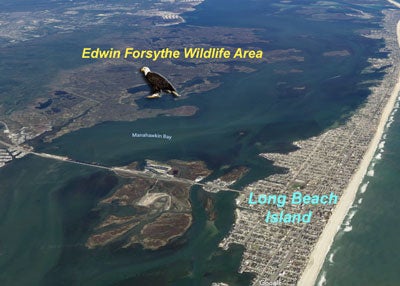
North of Cape May County, the Edwin Forsythe Wildlife Area near Smithville provides a chance to see a wide variety of species any time of year, Hajduk said. In recent winters, bald eagles and snowy owls are frequent visitors, and Hajduk said the migration of snow geese, often in November, provides a chance for some incredible photos as thousands of the white geese with black-tipped wings fill the sky.
For the early spring, Karlson suggested the Delaware Bay beach at the end of Kimbles Beach Road off Delsea Drive in Middle Township, where a tiny neighborhood sits close to the bay at the end of a long road though woods and wetlands.
There, and elsewhere along the remote Delaware Bay beaches, thousands of shore birds gather each year to feed on horseshoe crab eggs. Those travelers include the famous red knot, a dove-sized bird that flies from South America to the Arctic each year. Sandpipers, sanderlings and many other species crowd the tideline each spring. There you will need a long lens to capture an image of the birds, because the beaches are closed to the public from April until June to protect the birds. It is also possible to use a cellphone to catch an image through a spotting scope or telescope, using what’s called digiscoping.
Through the summer, Karlson suggests the natural area in the south end of Stone Harbor, where dramatic shorebirds — including the oyster catcher with its bright orange bill and the endangered piping plover — make nests on the beach.

“Stone Harbor Point is a wonderful place to go, and, best of all, it’s free,” he said. There is a free parking area on the beach block at the far south end of Stone Harbor. From there, the natural area of the point stretches more than a mile with no houses, no lifeguards and no swimming allowed. Colonies of terns and the dramatic black skimmers can be found nesting here in the summer. Often areas of this beach are roped off to keep people away from the nesting areas to avoid disturbing the nesting birds, but Karlson said it’s possible to remain outside the restricted area and see amazing birds.
As the summer moves to early fall, he suggests the Two-Mile Beach natural area south of Wildwood Crest, at the far south end of the barrier island that includes Wildwood. Once part of the Coast Guard base, the area falls within the Cape May National Wildlife Refuge, which includes sites throughout Cape May County.
Throughout the year, he suggested the South Cape Meadows area, a preserved stretch near the beach off Sunset Boulevard heading west out of Cape May. The Nature Conservancy operates the property, which includes ponds, wetlands and a length of beach.
“That can be very interesting for photography all year round,” he said. “It’s a very beautiful wild area to walk.”
There’s a good chance to see egrets, great blue herons and other wading birds, along with waterfowl in the freshwater ponds. Even if there are no dramatic birds, the views of the Cape May Lighthouse also make for striking images, especially around sunset.
In the fall, particularly in October, he suggested a nearby spot that’s easy to reach. The hawk-watch platform at the Cape May Point State Park overlooks a freshwater pond, and it draws big crowds each year for the hawk migration.
“Pay a visit if you have a telephoto lens when the wind is from northwest or north and there’s a cool front. You may get the opportunity to shoot some incredible birds of prey,” Karlson.
Each photographer said the more you learn about the birds and other wildlife you’re trying to capture, the better chance you’ll have of getting that amazing image. But there are no promises, Karlson warned.
“The thing I’ve got to stress about Cape May is you never know what you’re going to get,” he said. “If you think you’re entitled to get a great shot every time you go out, you’re very much mistaken.”
WHYY is your source for fact-based, in-depth journalism and information. As a nonprofit organization, we rely on financial support from readers like you. Please give today.


